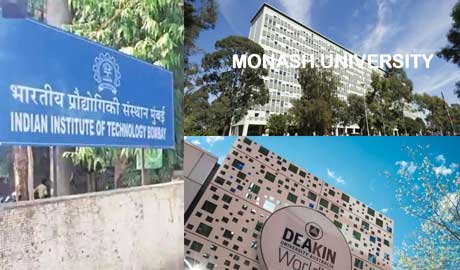A new study has shown for the first time how inexpensive materials can be used in high performance batteries of the future. The study, published today in ACS Energy Letters, is a collaboration between Monash University, the India Institute of Technology Bombay-Monash Research Academy, and Deakin University.
Scientists and engineers have been focused on finding a more sustainable way of using lithium batteries which rely on scarce resources and is challenging to produce on a large scale at affordable prices.
But now scientists have shown that using a ‘carbon cloth collector’ can improve the sulfur utilisation of batteries, which would make them more efficient.
“Batteries of the future are necessary because in various significant market areas they form a vital part of the transition away from fossil fuels,” said study author Professor Douglas MacFarlane, from the Monash University School of Chemistry.
“Integration of renewables into the grid is hampered by the variability of the supply, and battery storage either in the home or at the wind/solar farm is seen as a necessary, but currently very expensive, component of the system” he said.
The research was conducted through a highly innovative PhD program in the IITB-Monash Research Academy – a partnership between the Indian Institute of Technology Bombay (IITB), India and Monash University.
Deakin University, with expertise in the prototyping and scale up of the batteries, also played a key role in the study. The research is part of a longer term collaboration between Monash, Deakin and the ITTB funded through an Australia India Strategic Research Fund (AISRF) project aimed at developing affordable high-performance batteries.
“The most immediate application of these batteries in India could be in local transportation applications, for example in the Auto-Rickshaws that are extensively used in Asia as well as smaller electric vehicles (EVs),” said study author, Professor Maria Forsyth, from Deakin University.
“In Australia we could see such batteries powering EVs, and they could also be used for home battery storage,” she said.
The study describes outstanding performance for a high-energy density room-temperature sodium-sulfur (RT Na-S) battery, with the discovery that a simple chemical activation of a carbon cloth current collector (which researchers fill with a sulfur-based liquid electrolyte ) could allow a Na-S battery to operate at near its theoretical voltage and deliver an energy density of just under 1kWh/kg of Sulfur.
The appeal of the Na-S battery is that the raw materials, sodium salts and sulfur are very commonplace and inexpensive.
The battery operates at room temperature and can be charged and discharged at reasonable rates, for example 1/2 an hour charging and discharging.
The carbon cloth is the key to the development. By activating it in a simple process it becomes a catalytic agent in the discharge process of the sulfur electrode, leading to a higher overall voltage and extended cycle life.
Similar Posts by The Author:
- The Untold story of the ANZAC-India friendship
- Australia Post – new performance standards from 15 April
- Premier’s department fighting the release of SECRET hotel quarantine documents
- Vic Gov funds 13 programs that help international Students
- Nationals call for more funding to fight rising crime rates in regional Victoria

